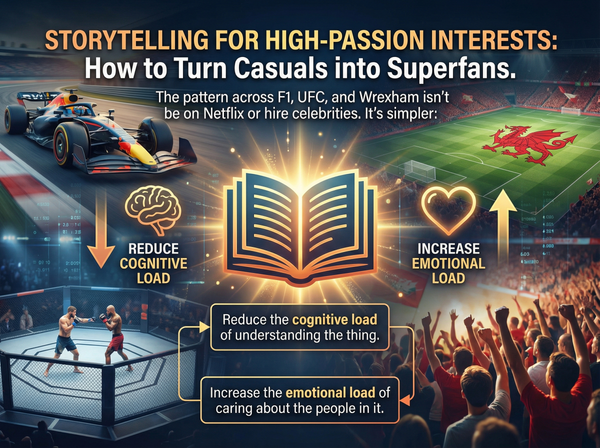Represents Vault Strategy: Turn Sales into Customer Acquisition Engines
Sales are a powerful tool for driving revenue, but they often come at a cost—a one-time transaction that fails to build a lasting relationship with the customer.
The Represents Vault strategy is a sophisticated marketing blueprint that transforms a simple sale into a powerful, data-driven engine for customer acquisition, brand loyalty, and long-term business growth.
This isn't just about offering a discount; it's about creating a valuable exchange. By requiring a customer's email address to unlock exclusive savings, you're building a foundation for long-term business.
The 3 Silent Killers of Discount-Driven Sales
Standard discount strategies have three fatal flaws:
- Zero data capture - Customers disappear after the sale
- Price training - Customers expect deeper discounts over time
- No relationship building - Every sale starts from scratch
The Vault strategy solves all three simultaneously.
Crack the Code: The 4 Phases of the Vault Strategy
Phase 1: The Build-Up & Tease (Building Anticipation)
Before the sale, you need to create a sense of intrigue and exclusivity. Use all your marketing channels to hint at an exclusive event that only a select few will get access to.
- Social Media: Post cryptic messages and visually stunning graphics with phrases like The Vault is Opening, or Access Granted Soon. Use countdown timers to build excitement and urgency.
- Email Marketing: Send an initial email to your existing subscribers with a sneak peek. This hints at the value of being on your list and encourages them to stay tuned.
- Blog Content: Write posts that prepare your audience for the biggest sale of the year, subtly mentioning the upcoming event without revealing all the details.
Phase 2: The Gateway & Data Capture (The Point of Exchange)
This is the core of the strategy—the moment a customer must provide their information to gain access to the deals.
- The Landing Page: This is your digital vault door. It should be clean, high-impact, and have a single, clear call-to-action (CTA). The imagery should be dramatic, such as a locked door or a keyhole. The CTA button should read something compelling, like Get My Key.
- The Pop-Up: On your home and product pages, use a non-intrusive pop-up that directs visitors to the vault landing page. Make it clear that this is the only way to get the discount code.
- The Data Exchange: The form itself should be simple: just an email address and a first name. The less friction, the better. Below the form, you can have a checkbox for them to opt-in to SMS marketing, which is a powerful channel for future promotions.
Phase 3: The Follow-Up & Nurture Sequence (Turning a Shopper into a Fan)
The work doesn't stop once a customer gets the code. This is where you transform a one-time shopper into a lifelong customer.
- Automated Email #1: The Welcome & Code Delivery: This email is sent instantly. It should contain the vault code, a direct link to the vault page, and a warm welcome.
- Automated Email #2: The Story & Value Proposition: A day later, send a follow-up email that goes beyond the sale. Tell your brand's story and what makes your products special. This builds an emotional connection and brand loyalty.
- Automated Email #3: The Product Showcase: Two days after, send an email showcasing best-sellers or products related to what the customer was looking at.
- Abandoned Cart Recovery: If someone enters the vault and adds items to their cart but doesn't purchase, you now have their email to send a gentle reminder.
Phase 4: Post-Sale Engagement (Building a Lasting Community)
The vault may be closed, but your relationship with these new customers has just begun.
- The Thank You & Review Request: A few days after a purchase, send a thank you email and ask for a product review.
- Future Campaigns: Segment your new list. These are high-intent customers who are likely to respond to future sales. You can now send them targeted emails about new product launches or exclusive content.
- The VIP Club: Create a special segment for your Vault customers. When you have an exclusive product launch or an early access sale, give them a heads-up first. This reinforces the idea that they are part of an exclusive club.
Why the Vault Strategy Works: The Core Benefits
This approach delivers tangible benefits that traditional sales models miss.
1. The Gateway: Capturing Valuable Data
The most obvious benefit is the data capture. By requiring an email address, you're building a list of high-intent customers. These are people who are interested enough in your products to provide their information, making them a golden asset for future marketing efforts. You can use this data for targeted marketing, customer nurturing, and remarketing campaigns.
2. The Illusion of Exclusivity
By making the sale members-only, you're creating a sense of exclusivity and urgency. It's a psychological trigger that makes the deal seem more valuable. Shoppers feel like they're getting special access, which can drive them to act faster and helps build brand loyalty. You're not just a faceless online store; you're a community that rewards its members with special perks.
3. The Follow-Up: From Shopper to Superfan
The magic of the Represents Vault strategy happens after the sale. The data you've collected is your new superpower. You can send post-purchase emails, recover abandoned carts, and let them know about new product launches. This turns a single transaction into a lasting relationship, nurturing them from a one-time shopper into a repeat customer and, eventually, a brand advocate.
4. The Long-Term Asset
The most significant benefit is that you're building a long-term asset: your email list. While sales are temporary, a list of engaged, high-intent customers is a permanent resource that will generate revenue long after the sale has ended. This approach converts a temporary sales surge into a lasting stream of loyal, engaged customers.
The Bottom Line
The Represents Vault strategy isn't just smarter marketing—it's fundamental business transformation.
Instead of trading profit margins for temporary sales spikes, you're building a permanent asset: a list of engaged, high-intent customers who see themselves as part of your exclusive community.
Keep Crushing!
- Sales Guy


